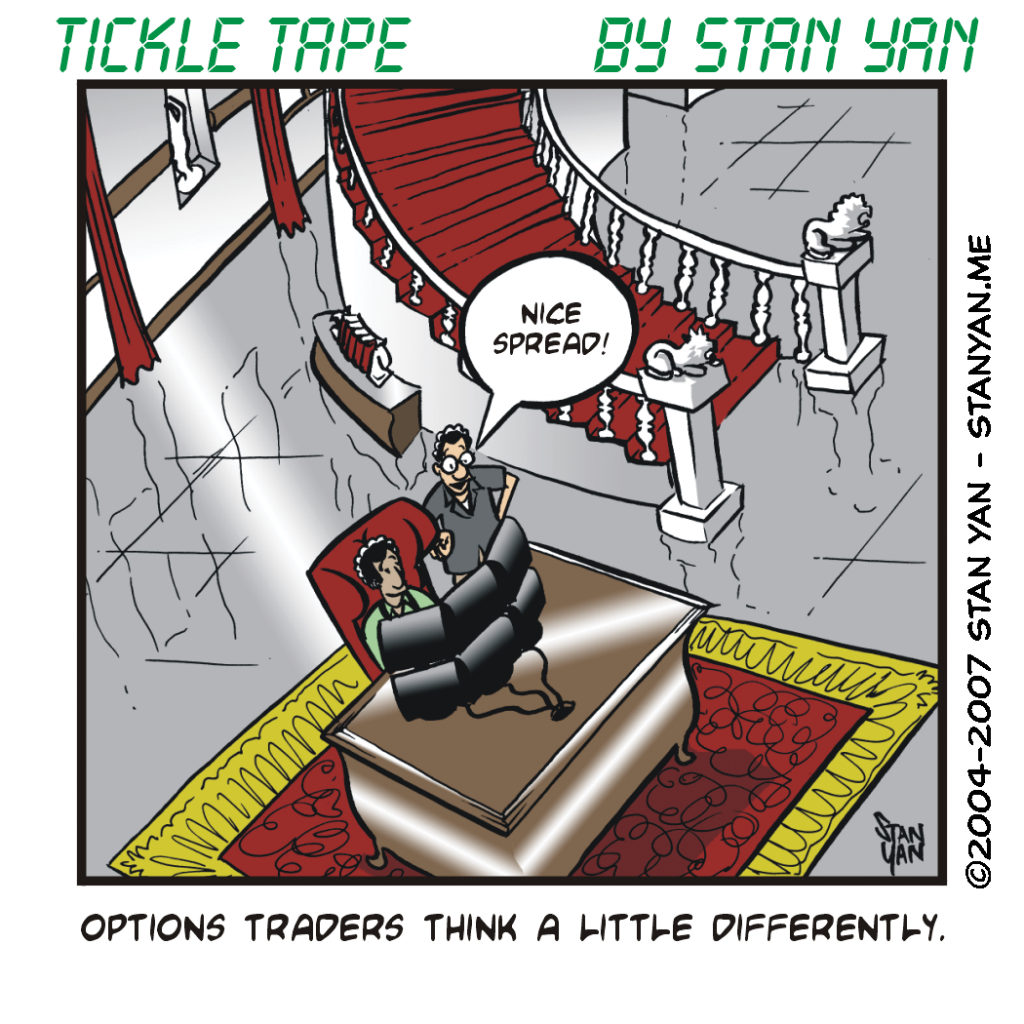When learning any new skill, one needs to find the right balance between pushing oneself to the limits and setting realistic expectations and goals. But whatever tact you take, you must work with what you’ve got. You must identify your natural inclinations and work around them.
This is especially a challenge for trading. There are two basic types of novice traders: the fearful and the overconfident. Neither type achieves long-term consistent success easily. The fearful are reluctant to put on trades. They are easily frightened. Upon encountering the slightest signal of the trade going against them, the bailout. They don’t make money in the long run. The overconfident, in stark contrast, don’t show enough caution.
They aren’t afraid to put large sums of their trading capital on the line, even when their methods are questionable. They have a gung ho attitude. They may stumble upon early success but usually fail in the end. Fortunately, these are two extremes, with most traders finding themselves somewhere in the middle. At whatever extreme you find yourself, you’ll make the most progress if you a workaround, rather than try to change, your basic personality style.
It’s useful to be a little fearful, but not too fearful. At least the fearful are sufficiently risk-averse that they show enough scepticism to protect their interests. Some people are overly fearful, however. Their central nervous system is easily “activated” and when facing risk, it’s unbearable. Traders with this kind of personality style are afraid to put on big trades, and while they are in a trade, they feel uneasy as they wait for the trade to reach the profit objective.
Because they panic a little too easily, they sometimes have trouble sticking with their trading plan. They hesitate upon entering a trade and may exit at the wrong time. Although it’s hard for the extremely risk-averse to trade in a calm, objective, and effortless style, it doesn’t mean that they need to give up trading. One just needs to come up with ways to work around one’s limitations.
Even some professional traders are reluctant to enter a trade. To work around this personal limitation, some call the trade into a broker with specific instructions, such as where to buy, when to exit, and where to place a protective stop. Similarly, other traders use automatic settings on their trading software to enter and exit trades at optimal times. Clearly, there are disadvantages to these strategies. It’s difficult to use these strategies when trading in an intraday timeframe, for example. It may be necessary to trade weekly swings or make long-term investments.
It would also be useful to make every effort to address outside influences that produce anxiety and fear, such as managing risk by trading small positions and using protective stops. (And through practice and the use of professionally administered relaxation training, one can control one’s natural tendency to experience anxiety and fear.) But the main point is that one can trade profitably even though one’s natural inclinations don’t exactly match the ideal trader personality of the cold, rational, objective trader who isn’t afraid of risk.
The overconfident, novice trader doesn’t show enough risk aversion. Overconfident traders think they have more skills than they actually do, and tend to put on trades without adequate preparation. There are many kinds of overconfident traders. For some overconfident traders, their trading behaviour was improperly reinforced. For example, they may have learned to trade in a bull market where prices seemed to go essentially straight up.
Or their first few trades may have made big profits, purely by chance, and they gained a sense of reassurance and a false sense of confidence because of this run of early luck. Others, ironically, only appear overconfident, but actually, they lack confidence and just put on trade after trade to hide their feelings of inadequacy. Whatever the reasons, it’s vital for survival to admit that as a novice trader, one does not yet have the requisite trading skills to trade with a solid sense of self-confidence.
One should be a little sceptical and take proper precautions to manage risk, again, by trading small positions, using protective stops and outlining a very detailed trading plan. It’s also essential to set realistic goals. Rather than focusing on unrealistically huge profit goals, which don’t match the trading skills of a novice, set moderate goals, which can be achieved. At the same time, it’s useful to set ambitious “learning goals.” That is, don’t focus on the profits, but devote much of your time to learning how to trade. Novice traders make the mistake of overtrading. They think they “should” spend all their time putting on trades, even when the market conditions don’t warrant it.
Instead, they would do better to spend that time taking classes, reading about new methods, and paper trading. Don’t underestimate the importance of building up well-honed trading skills. When you have the skills to trade consistently and profitably, you will truly have rock-solid self-confidence. And if you are the kind of person who isn’t afraid to take a big risk, you’ll be especially ready to use your trading skills efficiently. But until then, don’t over-leverage your knowledge. Don’t be arrogant and overconfident. Be humble, modest, and build up your trading skills.
Whether you lean toward the fearful trader or the overconfident trader, it’s useful to identify where you stand on this continuum and take active steps to work around your personality. Relax, take it easy, and give yourself the time you need to master the markets. You’ll soon find you can trade profitably and consistently.


